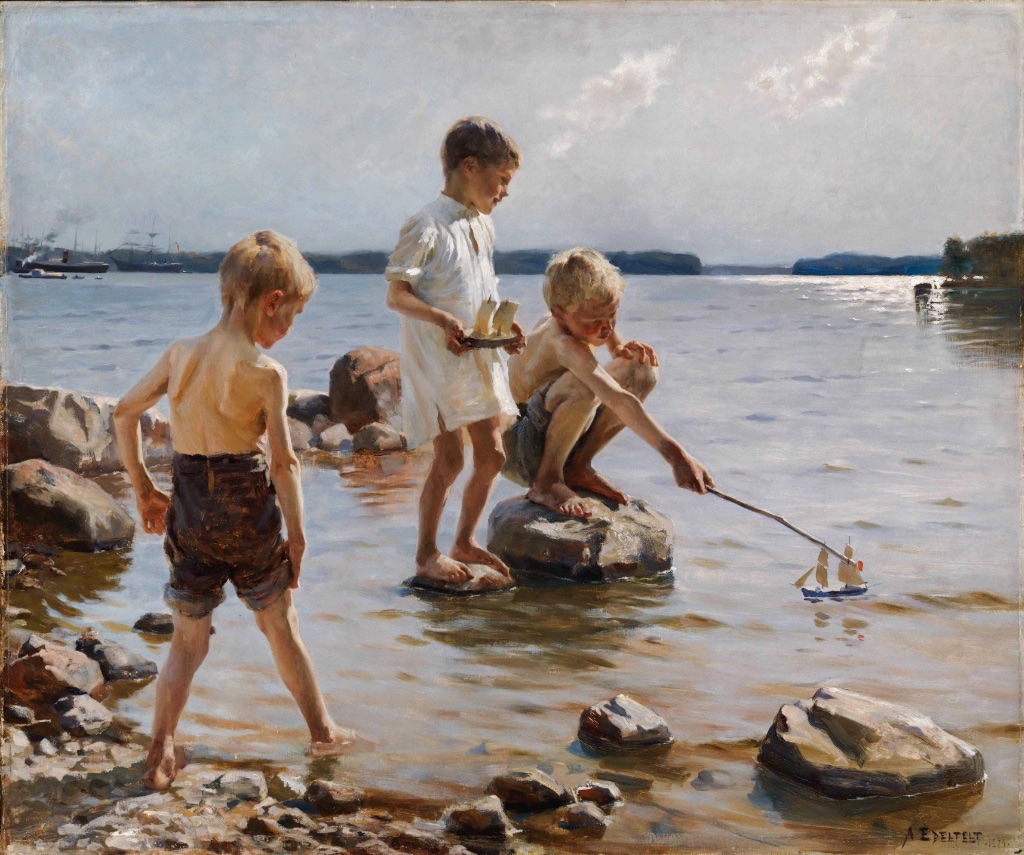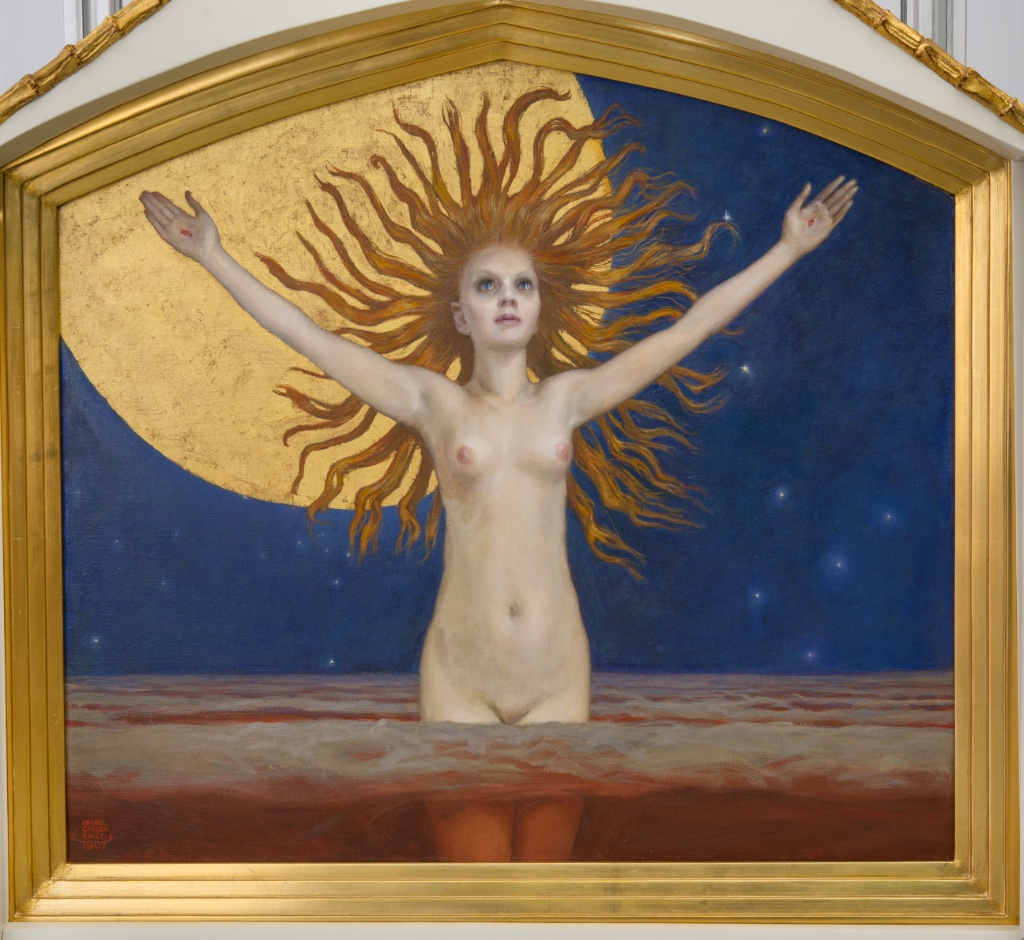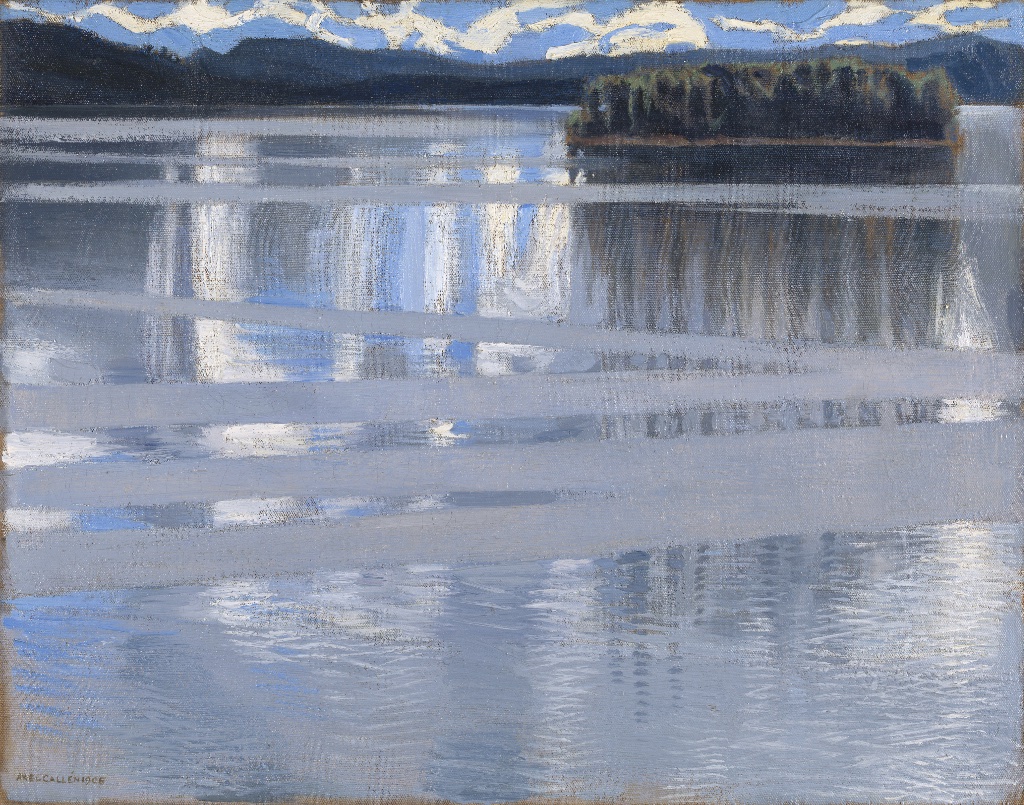
Is it an invasion from the north? Yes, but of a rather more gentle kind than we are seeing in Ukraine right now. For several years now, various Paris museums have been spotlighting the work of Nordic artists, notably in the major exhibition “The Golden Age of Danish Painting” at the Petit Palais and “Vilhelm Hammershøi: Danish Painting Master” at the Musée Jacquemart-André. Now both museums have looked north once again, this time to Finland – another country that struggled to free itself from Russian domination and formally declared its independence in 1917 – with exhibitions of the work of two of the country’s leading artists: “Albert Edelfelt: Lumières de Finlande” at the Petit Palais and “Gallen-Kallela: Mythes et Nature” at the Jacquemart-André.
Both painters studied in Paris and exhibited their work at the Salon. Edelfelt (1854-1905), the elder of the two, who settled permanently in Paris, offered advice and assistance to Akseli Gallen-Kallela (1865-1931) during his sojourns in the French capital, as well as to a number of other younger Finnish artists studying there. Both men remained strongly attached to their homeland and had country houses they returned to often to enjoy the Finnish landscapes.
The Edelfelt show is a deep dive into the artist’s work, while the Gallen-Kallela exhibition is necessarily more limited, given the small spaces available at the Musée Jacquemart-André.

Both artists exhibited lugubrious streaks, for good reasons other than the stereotypical nature attributed to the Finns. One Edelfelt painting, “Conveying a Child’s Coffin” (1879), is truly heartbreaking to look at. Six people, two of them rowing, sit in a boat with a small coffin, touchingly decorated with lace, which leans on the central bench with a wooden cross propped up against it. Next to it sits a little blonde girl clutching a small bouquet of yellow flowers in one hand, her downcast eyes looking at the water, away from the tragic box.

Amusingly, an American collector who admired this painting asked Edelfelt to make another version of it for him, but with happier subject matter. In “Going to the Christening” (1880), a similar group of people sits in the boat, but the coffin has been replaced by a large bouquet, and one of the women lovingly holds a swaddled baby. The little girl’s eyes are open, and she looks contemplative rather than sad. Do the different emotional tones say something about the respective outlooks of Finns and Americans? Perhaps.
Edelfelt, a realist painter known especially for his history paintings and portraits, did have a sunny side, however, evident in the masterly, Impressionist-influenced “Boys Playing on the Shore” (1884, pictured at the top of this page).
Sadly, Gallen-Kallela actually did lose one of his children, his daughter Impi Marjatta, to diphtheria in 1895. One of the engravings in the show, “Ex-Libris Mary et Axel Gallén” (1896), shows the artist and his wife standing on a balcony looking mournfully toward the cemetery where their daughter is buried.

After this tragedy, Gallen-Kallela’s work took a darker turn. He had always been interested in mythology and was known for his romantic illustrations of the Kalevala, a compilation of Finnish folklore and mythology, some of which are included in the exhibition. He was increasingly drawn to “cosmic” Symbolism, apparent in a number of works here, such as “Ad Astra” (1907), in which a naked girl, her arms outstretched, her hair extended around her head like the rays of the sun and her legs immersed in red water, exhibits the stigmata of Christ on her hands.

Personally, I prefer the artist’s landscape paintings, of which we have a few examples in this exhibition, in which his love for his country’s light and landscapes shines through. Many were made while he was living in his cherished wilderness retreat, Kalela, now a museum.
Both painters supported their country’s independence from Russia through the soft persuasion of their art. Let’s hope that today’s artists will have some such influence when it comes to standing up to Russian aggression in Ukraine.
Favorite